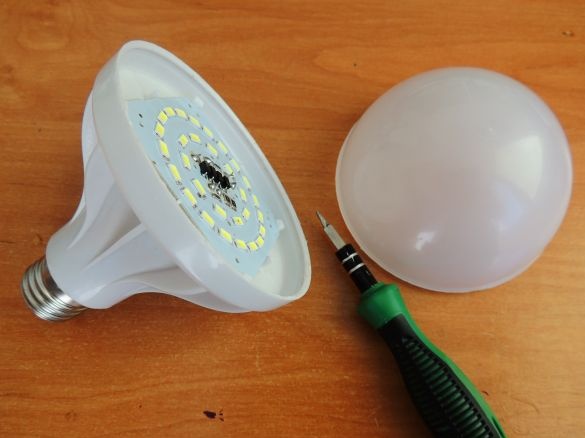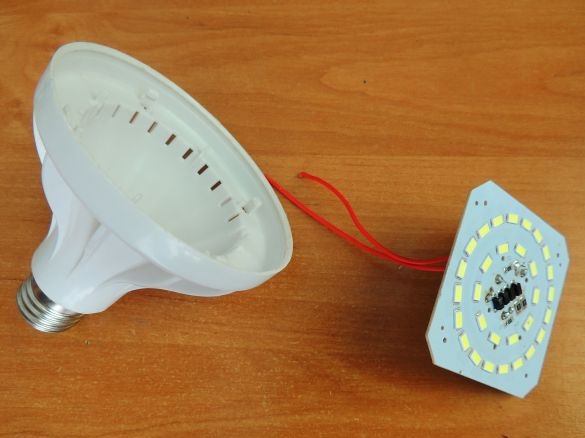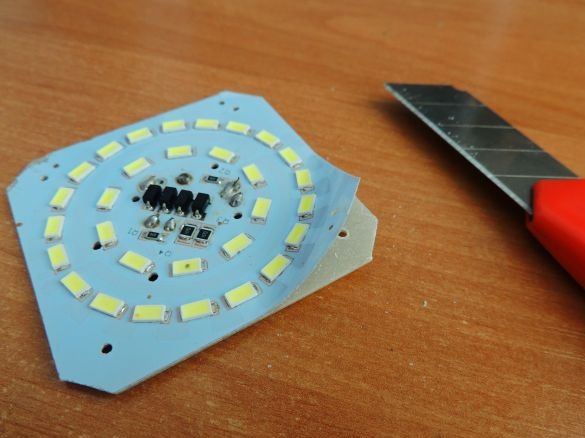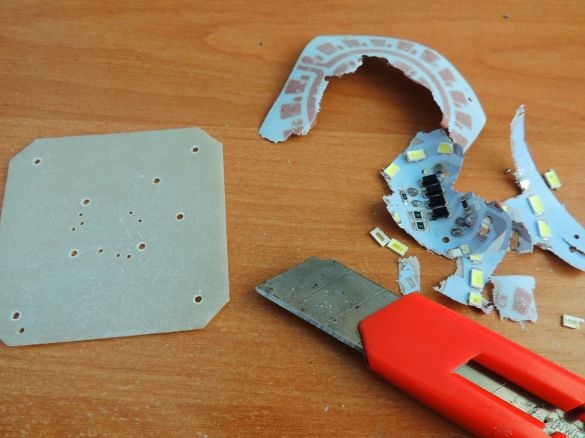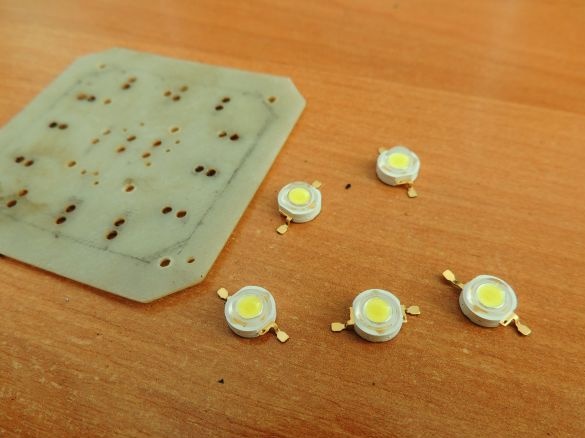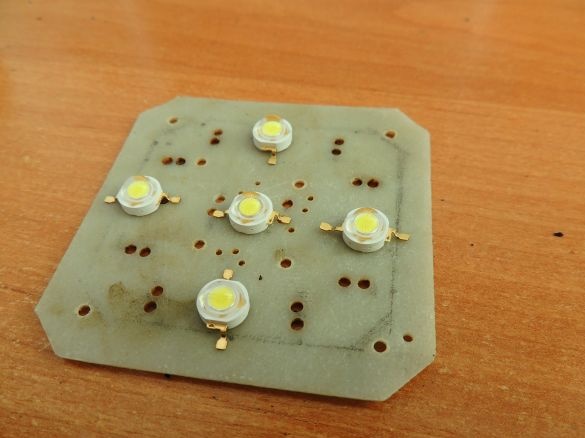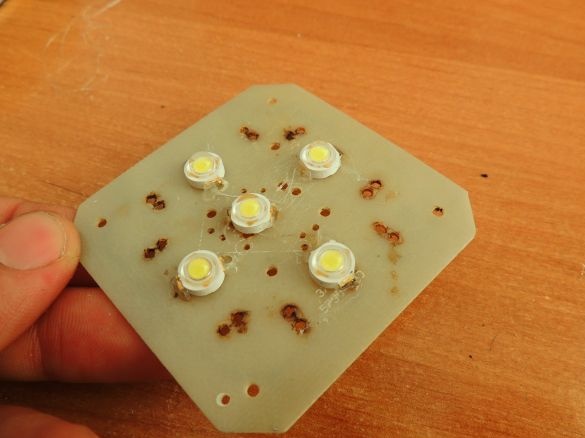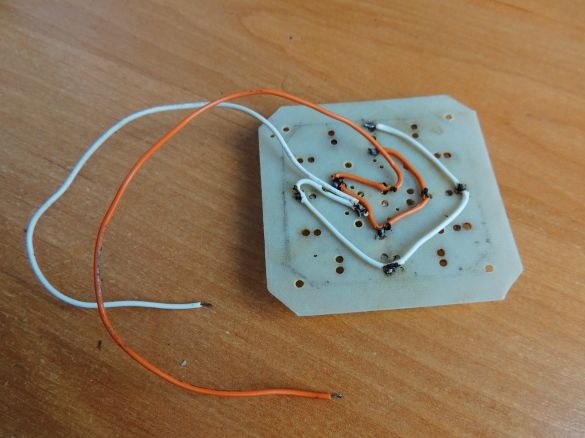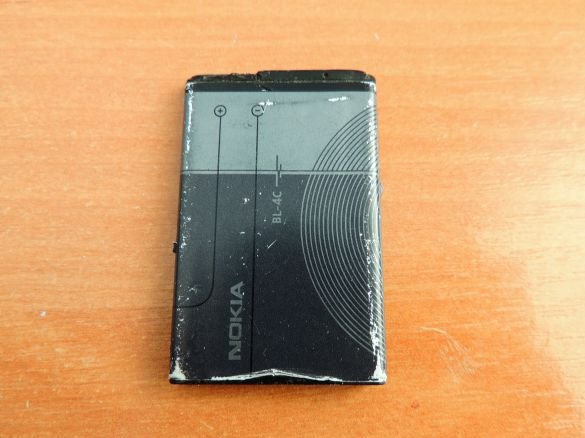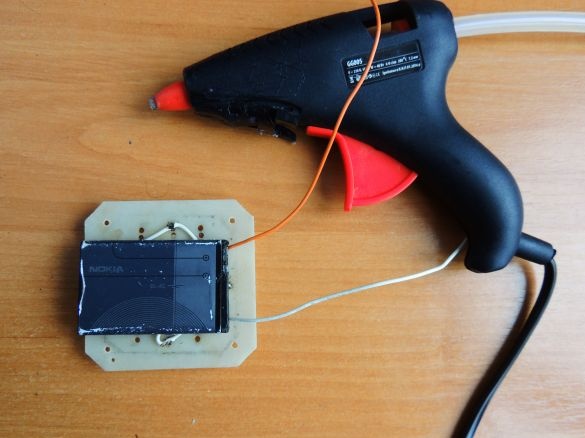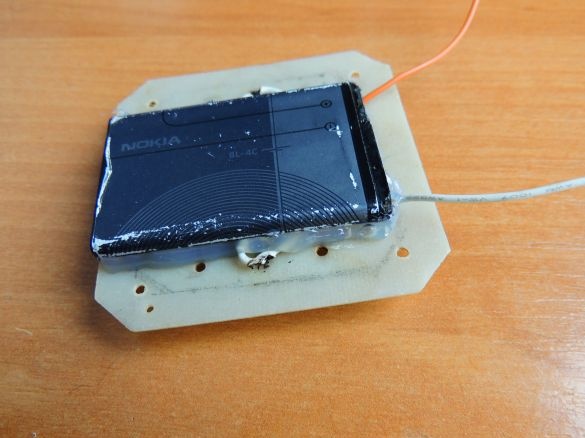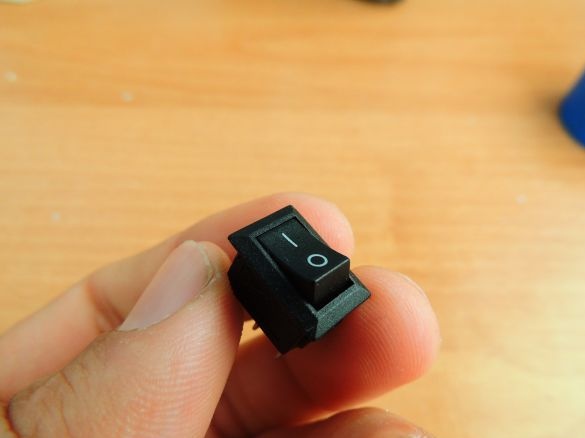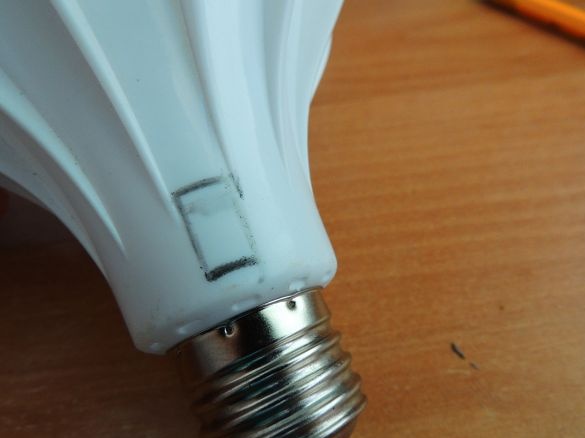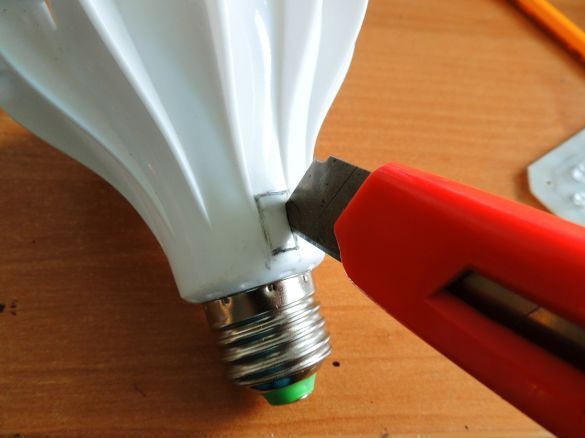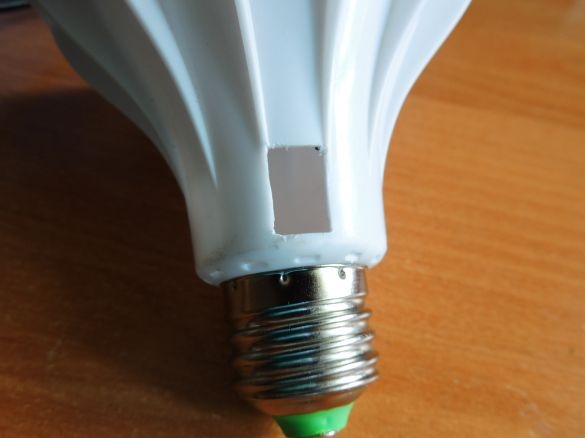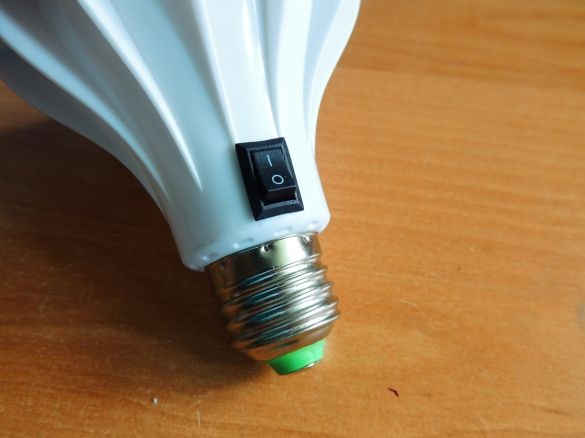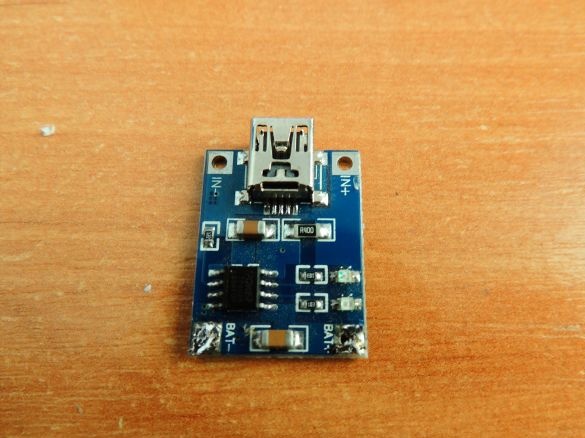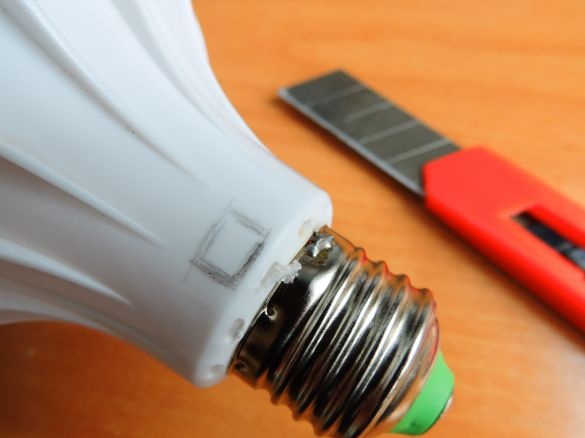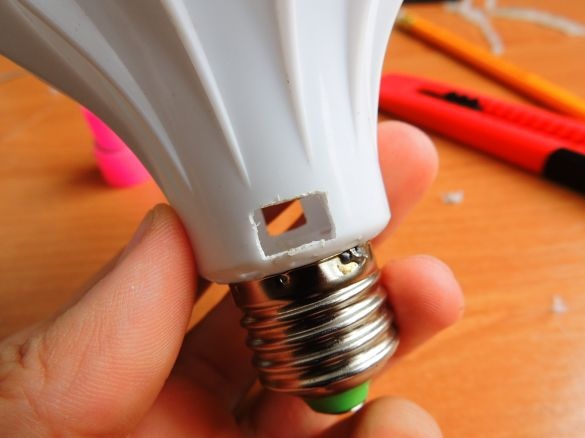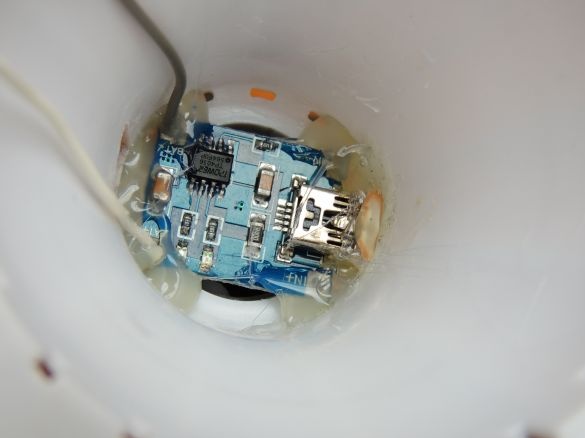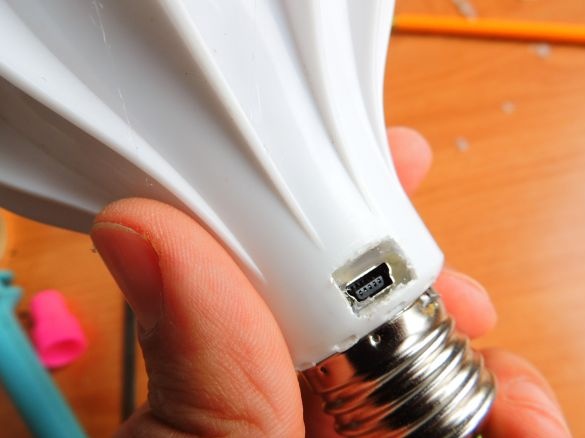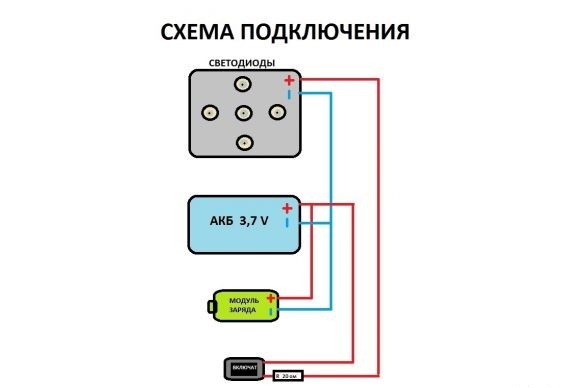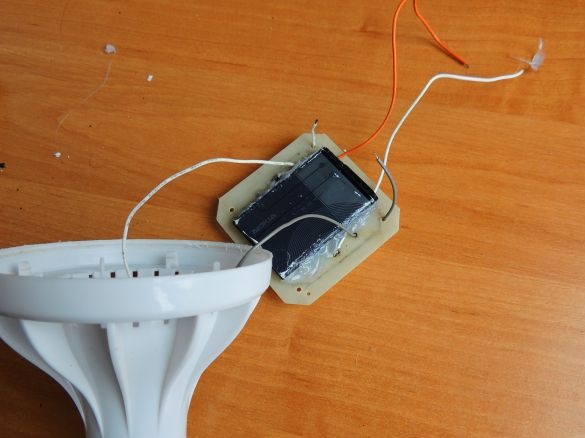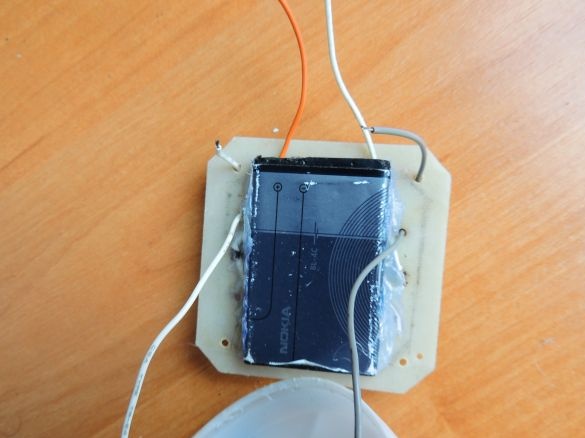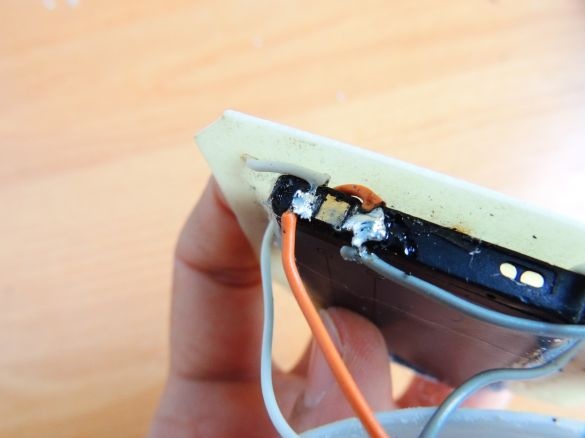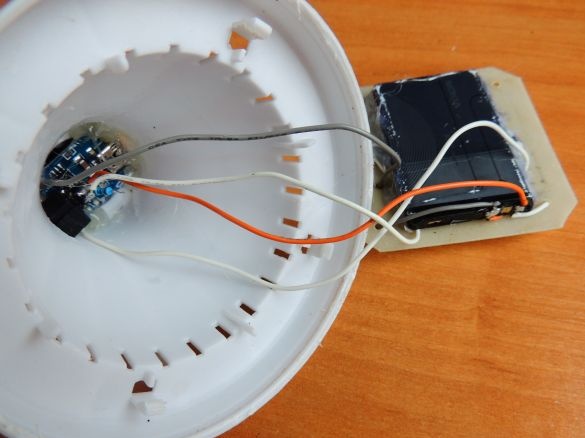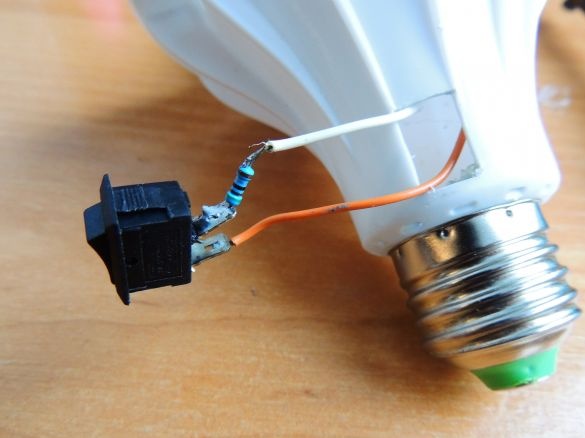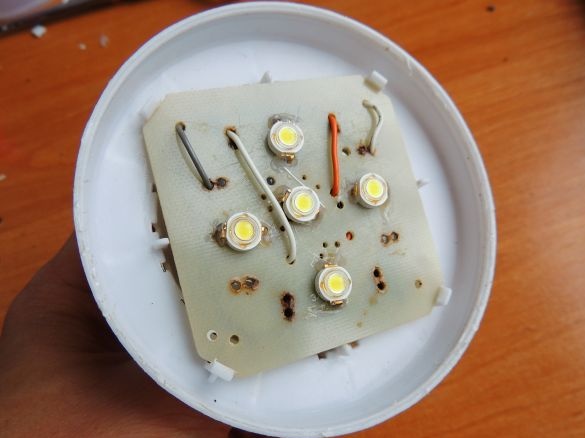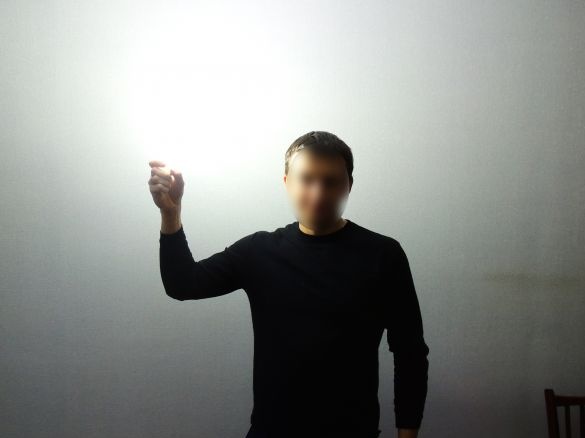I decided to share with you my little homemade product, which is quite simple to manufacture, and if desired, everyone can repeat it.
How? what? And why ? - Now I will try to tell in detail and show!
So, let's begin:
It all started with the fact that I got a broken LED lamp in my hands, which I initially tried to restore, but alas, nothing came of it. It was a pity to throw out, as always, with the words: - “come in handy”, put aside. Over time, I accidentally stumbled upon it, and it was decided to do something useful, namely, a rechargeable LED lamp.
I needed:
- Broken LED lamp;
- 5 LEDs of 1 w each;
- 1 battery 3.7 V (from the phone);
- 1 li-ion battery charge module:
- 1 switch;
- 1 resistor 50 ohms;
Tool:
- stationery knife;
- glue gun;
- soldering iron;
Here was taken this very ordinary LED lamp.
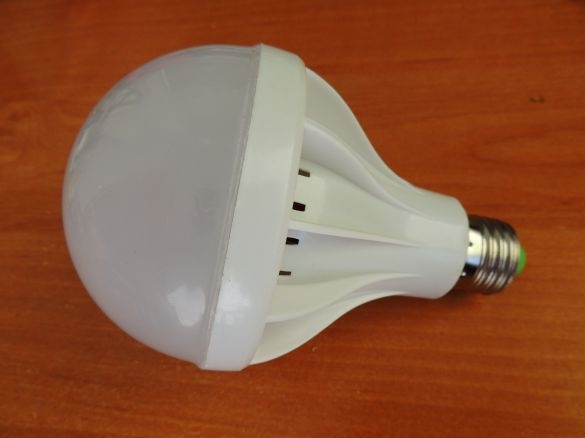 [/ center] Next, disassembled using a flat screwdriver
[/ center] Next, disassembled using a flat screwdriverThe main board with LED filling is removed, wires are cut
It was decided to remove the burnt LEDs by cutting one of the layers with a clerical knife.
At the end there was a clean area
Next, holes were made where the LEDs will be mounted, namely 5 pcs. with a power of 1 w each
The contacts are threaded into the holes and fixed with hot-melt adhesive.
Further, all the LEDs are soldered in parallel with each other
Here is a 3.7 v battery
Which we fix in the lower part of the plate with hot-melt adhesive, thus bringing the two contacts out
Now you need to work a little with the lamp housing, namely, install the switch, which will be located at the bottom.
To do this, take the switch, take measurements, draw a contour, and cut a hole with a clerical knife
Next, take the li-ion battery charge module, solder 2 + + wires to it, and also install it in the lower part. We make a cutout for charging, fix it with hot glue
Now it remains only to solder everything together.I will not describe literally what is where, and how. To do this, I sketched such a diagram, everything is described in detail and clearly, + I attach a couple of photos
We solder a current-limiting resistor with a resistance of 50 ohms to the switch
That's basically it. We put everything in its place. Electronic hide part inside, close the flask
As a result of all our actions, such a homemade product came out
Now we will test our LED lamp a little, see how it will show itself in operation
An example of the glow we got is
After 30 minutes of operation, the LEDs heat up slightly. He did not install heat sinks such as radiators. Heating is within normal limits. Since the LEDs do not shine at full power, they are limited by a current-limiting resistor. Brightness is enough. Such a lamp illuminates a small room not bad, but I do not need more.
As an option, in the future I want to add a small carabiner in the lower part, or a small hook, so that if necessary the lamp can be hung anywhere.
That’s probably all. What we ask incomprehensibly, I will try to answer all questions!
Thank you all for your attention!
Have a good mood!



